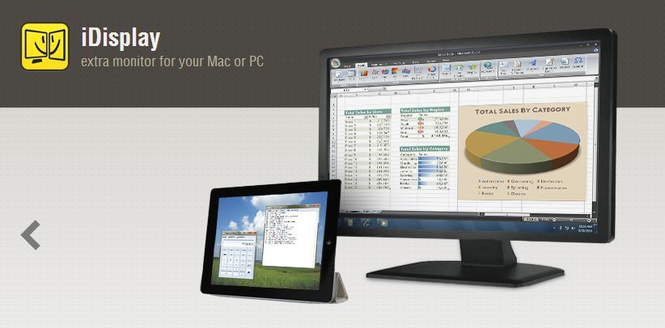
- #Idisplay multiple grapics install#
- #Idisplay multiple grapics windows 10#
- #Idisplay multiple grapics android#
- #Idisplay multiple grapics Pc#
- #Idisplay multiple grapics mac#
The installation requires you to reboot the machine.
#Idisplay multiple grapics install#
Once downloaded, you can install the software in just a few clicks.
#Idisplay multiple grapics mac#
IDisplay is available for Windows and Mac and both work the same way. When connecting via Wi-Fi, you have to make sure both tablet and computer are connected to the same network.
#Idisplay multiple grapics Pc#
(I found this method worked inconsistently, if ever.) To connect via Wi-Fi instead, you have to download iDisplay for your PC or Mac (see step 2), before this option appears. Once installed and opened, you'll see one option - connect via USB. No, the apps aren't free, but they're cheaper than a new monitor. You can easily find the app in the Google Play Store ($5.99) or Apple App Store ($19.99).

#Idisplay multiple grapics android#
#Idisplay multiple grapics windows 10#
After connecting your wireless display adapter to your TV, go to your Windows 10 PC and select Start > Settings > System > Display, then select Connect to a wireless display. Tip: If you're using a wireless display adapter, connect to an HDMI port on newer TVs, then wirelessly connect your PC to it. Simply Windows on Youtube - These videos are only available in English Troubleshoot connecting Surface to a second screenĬonnect Surface to a TV, monitor, or projector Troubleshoot external monitor connections in Windows See everything on the second display only. When you have displays extended, you can move items between the two screens. See your desktop across multiple screens. To change what shows on your displays, press Windows logo key + P. To change it in Display settings, under Scale & layout, choose your preferred Display orientation. To see available options, in Settings, select System > Display. Change display optionsĪfter you're connected to your external displays, you can change settings like your resolution, screen layout, and more. Test your new layout by moving your mouse pointer across the different displays to make sure it works like you expect. When you're happy with the layout, select Apply. Do this with all the displays you want to move. In Display settings, select and drag the display to where you want.

This is helpful if you want your displays to match how they're set up in your home or office. If you have multiple displays, you can change how they're arranged.

If you connected another display and it isn't showing in Settings, select Start > Settings > System > Display > Multiple displays > Detect. Select Settings > System > Display > Identify. To see which number corresponds to a display, select Start, then search for settings. Each display will be numbered to help you identify them more easily. You'll see this option when Windows detects more than one display. Detect a display If you connected another display and it isn't showing in Settings, select Start > Settings > System > Display > Multiple displays > Detect. After connecting your wireless display adapter to your TV, go to your Windows 11 PC, press Windows logo key + K to open Cast, then select your wireless display adapter. Select Settings > System > Display > Identify.


 0 kommentar(er)
0 kommentar(er)
